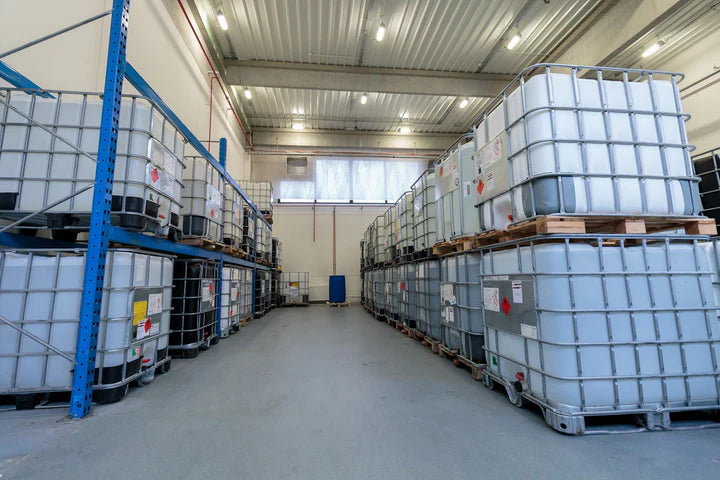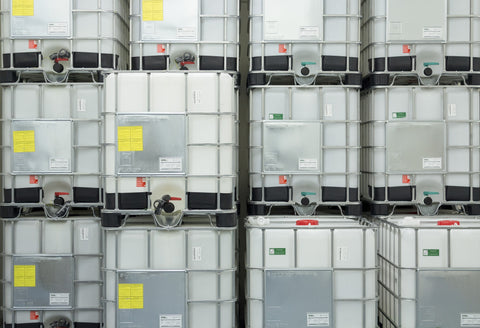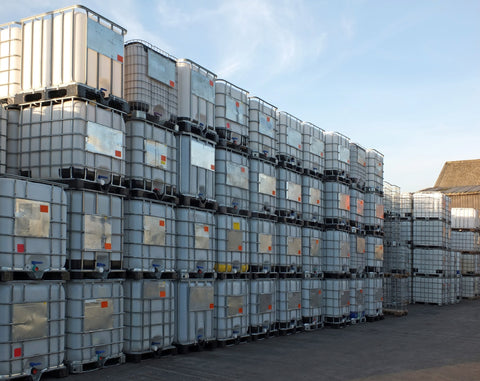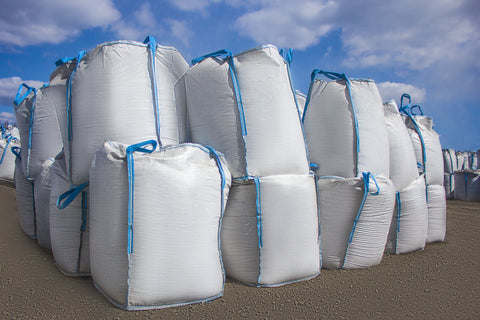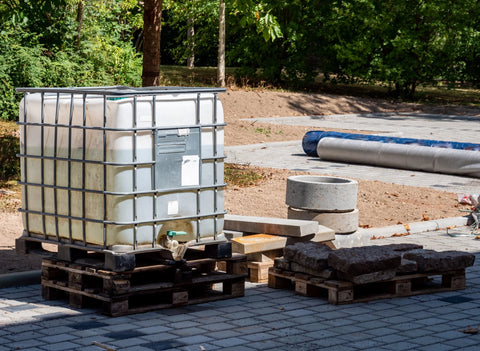Intro to Intermediate Bulk Containers (IBCs)
IBC totes are a common container for industrial and commercial use, but there are different sizes and types available. It can be confusing trying to figure out which one is right for your needs. In this blog post, we will give you a basic overview of the different IBC tote sizes so that you can make an informed decision. Keep reading to learn more about the different IBC tote sizes and their common uses.
Totes are most commonly used because of the problems that they can solve. They make it easier to store liquids, create ease and safety when transporting chemicals, use space efficiently, and are the most cost-efficient use (save on freight costs) as you aren't paying for as many containers. They all have a heavy-duty base that provides high durability and stability making it easier to stack multiple totes on top of each other.
What are they made of?
Industrial totes are often made of high-density polyethylene, a type of plastic that is durable and can hold a lot of weight. HDPE is also resistant to chemicals and moisture, making it ideal for storing or transporting hazardous materials. The construction of an HDPE tote is also less prone to condensation and scratches, which can help prevent contamination in environments where chemicals are present.
Industrial totes are commonly used in manufacturing plants, warehouses, and other facilities that handle large amounts of materials. They come in various sizes, shapes, and designs to suit different use cases.
What is a standard tote size? | Sizes of Totes
IBC totes come in various sizes, but the three most common and generally standard sizes are 275 gallons, 330 gallons, and 550 gallons. Here's a quick rundown of each size and some of the most common uses for each:
275 Gallon IBC Totes: These totes are great for storage and transportation purposes. They're often used to store and transport liquids like water, chemicals, oil, and wine. They can also be used to store dry goods like food, grains, and seeds.
330-Gallon IBC Totes: Like 275-gallon totes, 330-gallon totes are also great for storing and transporting both liquids and dry goods. One key difference between the two is that 330-gallon totes have a larger capacity, so they're often used when more storage space is needed.
550 Gallon IBC Totes: These totes have the largest capacity of the three common sizes and are mainly used for storing liquids. They're often used to store liquids such as chemicals, oil, detergents, and other industrial liquids.
IBC totes come in ten different sizes, and the dimensions vary by size: 120, 180, 250, 275, 300, 330, 350, 450, 535, and 550. Now that you know more about the different types of IBC totes, you can decide which size is right for you. If you have any questions or need help deciding, we'd be happy to assist you.
IBC handling specifications | stacking IBC containers
IBC totes are intended to stack while stored, transported, and used in the vehicle when filled. Intermediate containers made of a reusable material can be used to stack from two to three high-stacking containers; in certain situations, this can go from 4 to 3. Almost all IBCs can be stacked at least two high. If stacking three totes high, it is generally suggested only to do this with smaller-sized totes. Large capacity IBCs can be used in 3 high stacking if empty.
Which size do you need?
IBC totes are a versatile storage option for both liquid and dry goods. The three most common sizes are 275 gallons, 330 gallons, and 550 gallons. The size you need will depend on the type and amount of goods you need to store. If you have any questions about which size is right for you, our team would be happy to help you decide. Contact us today!


